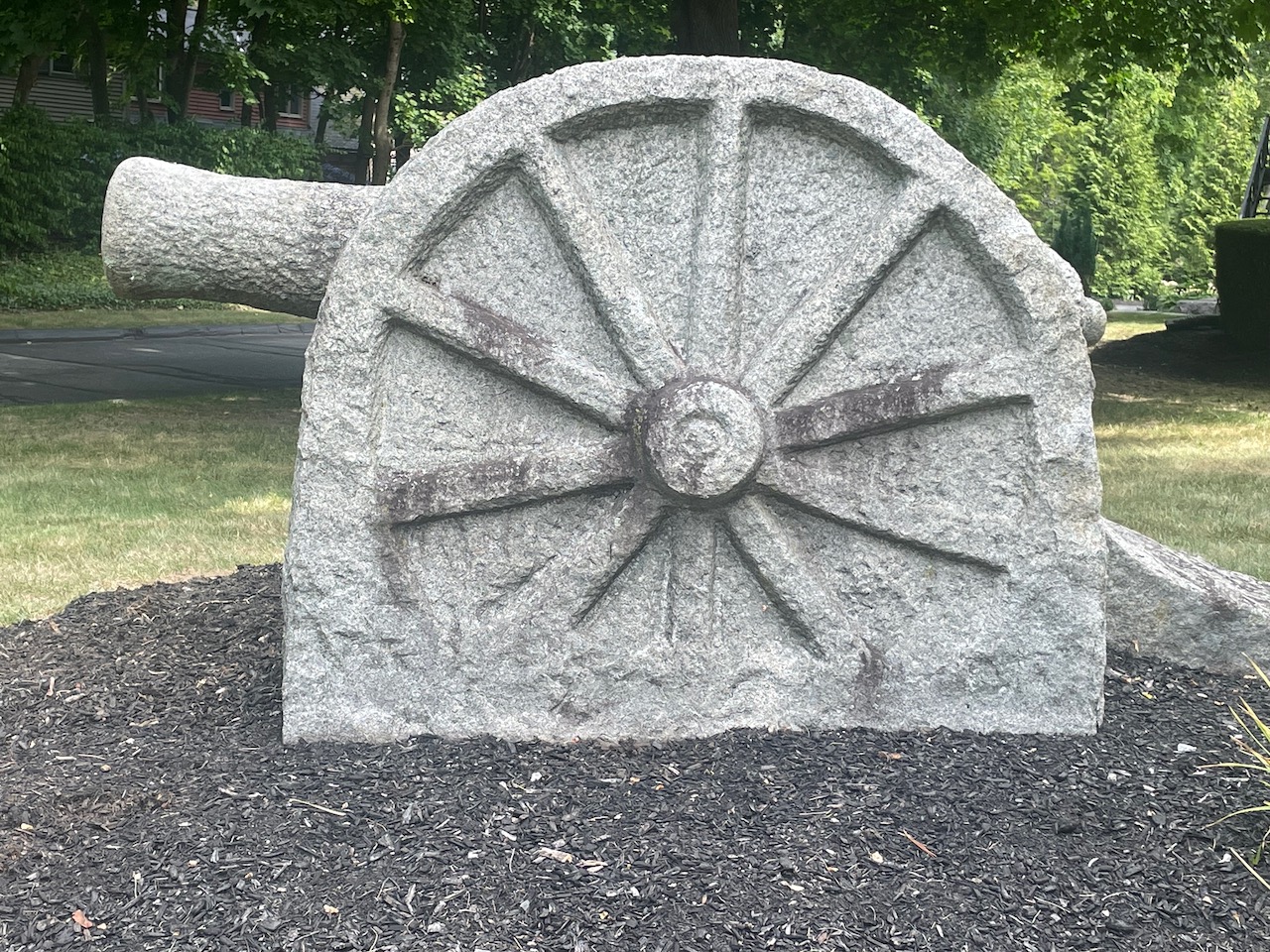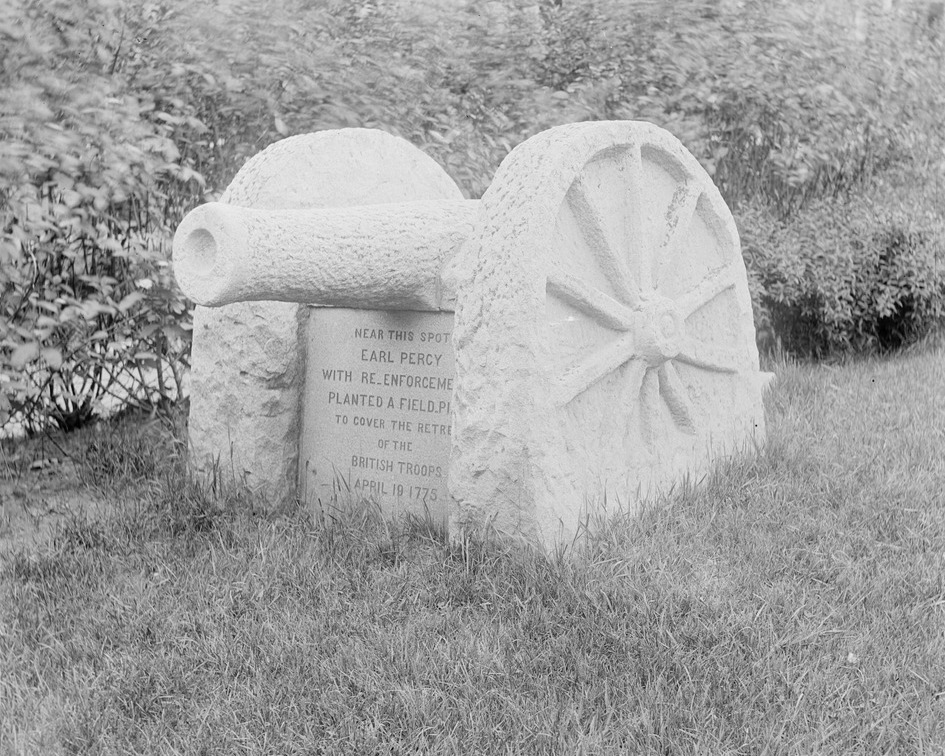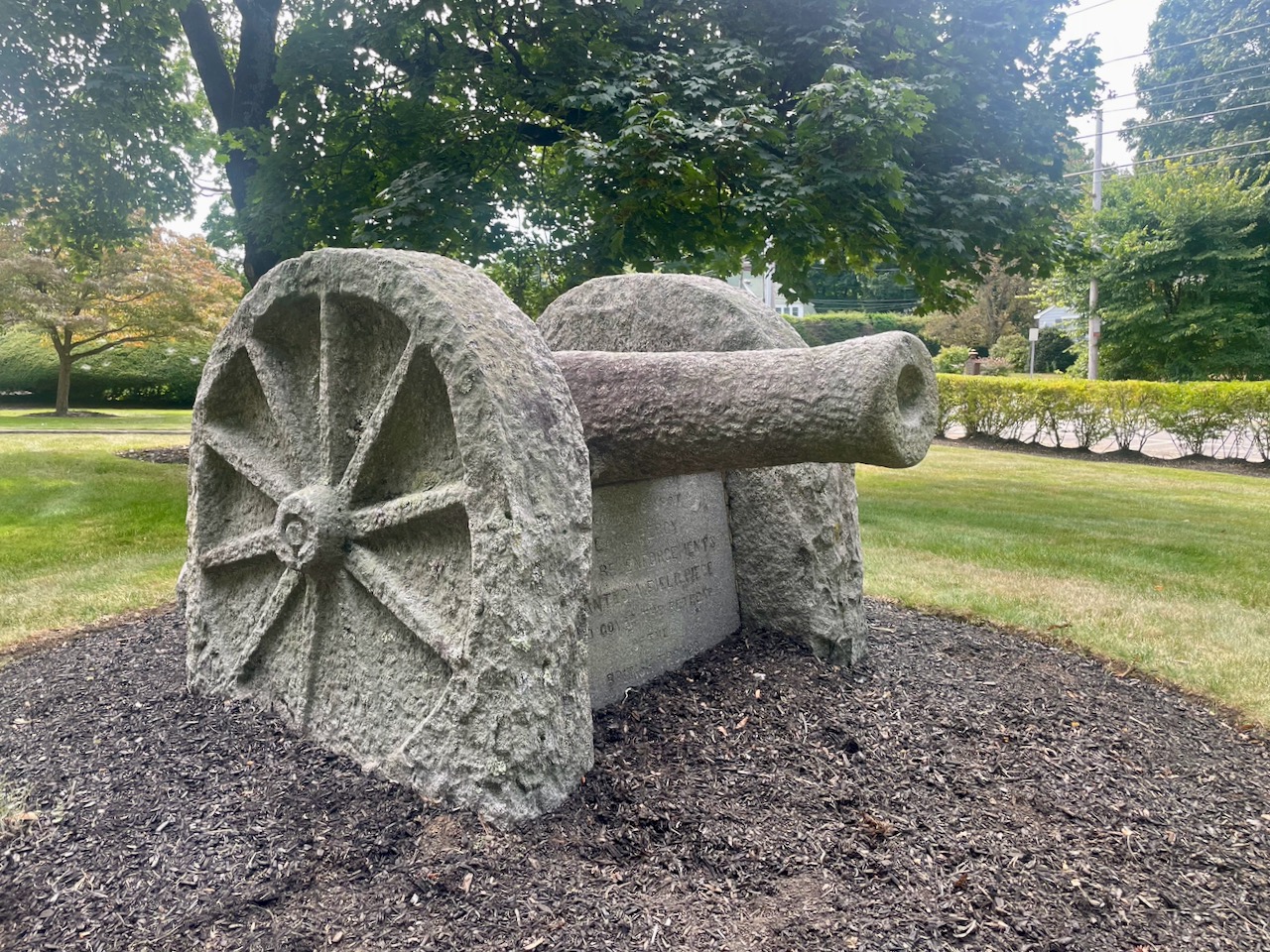

NEAR THIS SPOT
EARL PERCY
WITH RE_ENFORCEMENT
PLANTED A FIELD PIECE
TO COVER THE RETREAT
OF THE
BRITISH TROOPS
APRIL 19 1775
Jones, Leslie. “Lexington granite gun on lawn; old Concord, gun made out of stone.” Photograph. [ca. 1917–1934]. Digital Commonwealth.

Aptly shaped like a cannon, the Percy’s Cannon Monument indicates the general location of one of the “field pieces” that helped British Brigadier General Hugh Percy’s Royal Artillery to scatter the colonial militia in Lexington, allowing the British enough time to find safety behind Percy’s line.
According to the 1884 Report of the Lexington Monuments and Memorial Committee, the cannon also blew a hole thorough the meeting house, venting British spite, “upon the place where Parson Clarke has raised up men of the sternest Patriot stuff by his preaching and the town had taken its decided stand against British aggression.”
It was the third location to be marked as proposed by Lexington’s Committee on Monuments and Tablets and critical to understanding the events of April 19, 1775. The granite monument was erected at a cost of $156.40 (exclusive of its foundation) and at the time of its installation, the unique monument had a commanding view of the Battle Green.
The inscription reads:
NEAR THIS SPOT
EARL PERCY
WITH RE_ENFORCEMENT
PLANTED A FIELD PIECE
TO COVER THE RETREAT
OF THE
BRITISH TROOPS
APRIL 19 1775

